Stink Bugs: What You May Not Know
Have you ever spotted a stink bug in real life? If so, you were probably shocked at the appearance of the insect because of its unique shape. These bugs are not too small yet not too large.
While some insects are much larger than the average stink bug, seeing one in person can still leave you running and screaming if you’re scared of bugs. Stink bugs have a distinct shield-like shape to them.
If you don’t know much about them but you’d like to learn more, continue reading to get all the essential information worth learning about these bugs. The picture above is a brown marmorated stink bug. In case you missed this post, How to Deal with a Rodent Infestation
Stink Bugs: What You May Not Know
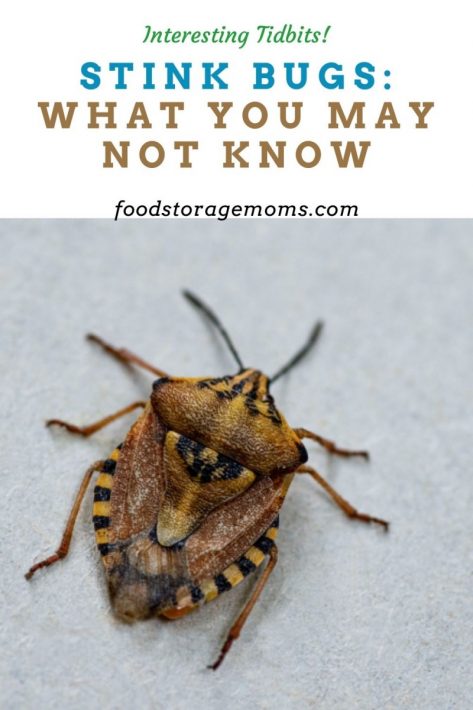
Where Do They Come From?
Stink bugs are native to Asian regions, including Korea and China. While they were first identified in those areas, they’ve since traveled far and wide and are now easy to find just about everywhere. If you live in the United States, you’ve likely spotted these bugs on more than one occasion, but it all depends on where you live!
Where Does the Name of the Insects Come From?
While the scientific name for these insects is Halyomorpha Halys, they’re best known as stink bugs worldwide. So, why did they get such an unusual name? It’s because of the odor they leave behind to attempt to avoid predators.
They can release an odor that would deter predators from getting too close to them. So, if you kill a stink bug with a shoe or fly swatter, you may smell that odor too.
The picture below is a newly hatched brood of Brown Marmorated Stink Bugs.
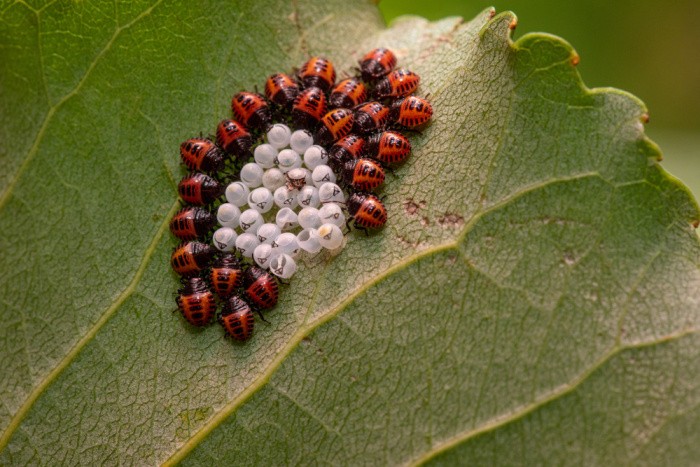
Why Would Stink Bugs Show Up in or Around a Home?
If you’re starting to see these insects in or around your home, you’re probably wondering why. Some insects are attracted to blood, and some are attracted to food sources. However, stink bugs are attracted to lights!
For example, if you have fluorescent lights in your bathroom, the brightness of the lights could attract these insects, causing them to make their way into the home. Do you happen to have bright string lights installed in your backyard?
If so, this is likely the reason you see the stink bugs outside. While it’s annoying to see these insects flying around, you don’t have to get rid of your string lights because of them!
What If You See Multiple Stink Bugs in the Home?
When spotting multiple stink bugs in the home, it’s a clear sign that you’re dealing with an infestation. First, you’ll need to make sure you’re taking the proper steps to handle the situation. If not, it’s only going to get worse.
While these insects typically only reproduce four times per year, they can lay up to 30 eggs each time, ultimately leading to more stink bugs than you could handle at once. Reproduction and breeding occur during the spring and summer months, and that’s when you may notice the infestation happening. The picture below is larva and eggs from stink bugs on a leaf.
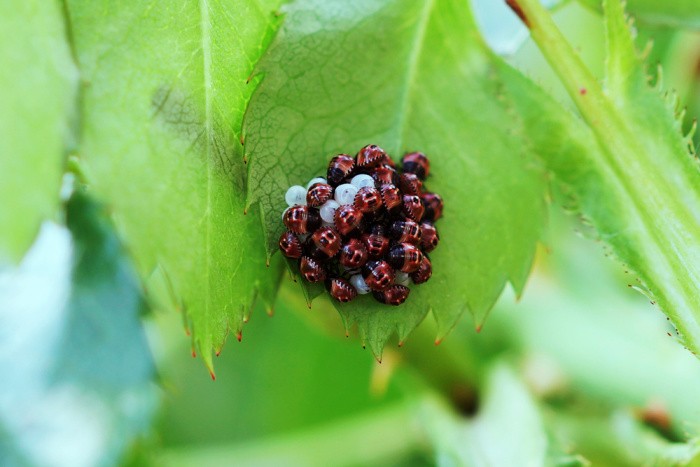
Stink Bug Infestation – How to Get Rid of Stink Bugs
If you have an infestation of these bugs in your home, be sure to take the following steps to eradicate them and get your home back to normal again:
- Find out where they’re accessing the home. These stink bugs are commonly flying around outside. Their attraction to light will lead them into your home, but they’d need to have some access point. Look around the house for small holes. If you spot any tiny holes, they’re likely getting in through there, so you’ll need to seal those holes. You may need to replace window screens and ensure that you’ve fully sealed your windows. Use a door sweep to keep these insects from getting into your home through the front or back door.
- Use natural insecticides to get rid of them. Contrary to what some people may believe, you won’t need toxic chemicals to eliminate these unwanted insects. If you’d like to put a stop to the stink bugs, use neem oil. It’s a natural oil that works well at eliminating them and keeping them out of the home. You can add a few drops of neem oil to a spray bottle full of water, shake it well, and then spray around the house. Pay special attention to specific areas, such as the doorways and windows. The neem oil works as a deterrence to keep these insects away. You can also spray it outside in your backyard if you’re spotting them out there, too. NEEM OIL
- Place bug traps around the home. You might want to consider placing a few bug traps around the house to capture any stink bugs that are already lingering around. Once they get stuck in the sticky traps, they won’t be able to go anywhere, so they’ll die. It’s the best way to get rid of them because if you kill them with a fly swatter, you’ll deal with that foul odor that comes from them! If you’re going to use bug traps, be sure to put them out of reach of your pets and children for safety reasons. Sticky Bug Traps
Some Other Options
- Stink bugs like wet or moist areas. Be sure to seal off leaky pipes or eliminate standing water in your yard or garden.
- These bugs can sneak into your home through some very small cracks or other openings. Seal off cracks in the foundation and around windows and doors. Look for areas where your siding doesn’t fit tightly together and near door jams and window frames.
- Just like all insects, stink bugs love to eat. Make sure you don’t leave food out all day or overnight. Like a good prepper, store your food in containers with lids that fit tight. After meals, wipe down the counter tops and flush out the sink so no crumbs or other residue are left out.
- Each holiday as you bring in the decorations be sure to check them out since the bugs may be hiding in storage boxes or bags.
- Since stink bugs like moist areas, consider some ventilation in areas like basements, attics, out in the garage, etc. Having the air circulate properly may help to dry out these places. If ventilation isn’t doing enough, you may want to consider a dehumidifier for the most moist areas. Also plan to cover outside access points like your chimney stack and attic air vents with screens. This will help keep the bugs out and won’t conflict with normal air flows needed.
- If you do find stink bugs in your home don’t be tempted to smash them. They aren’t called “stink bugs” for their fresh smell. Either pick them up with a tissue and put them in a bag with the garbage, or consider using your vacuum. Be sure to empty the vacuum each time since the dead bugs will smell too.
Will the Stink Bugs Bite Me?
While they look weird and aren’t fun to deal with when you’re spotting them flying around in your backyard or inside the home, the good news is that these insects won’t bite or sting you. Although they’re relatively harmless, most people don’t want to deal with stink bugs in their homes.
So as you work on getting rid of them, you won’t have to worry about one hopping on you, biting you, and causing any irritation.
More information on stink bugs. Pest World.org
Stink Bugs: What You May Not Know
Final Word
Now that you have more knowledge about stink bugs, including where they come from, why they have such a silly name, and the reason they tend to appear in backyards and homes, you can handle them the right way.
You don’t need to get rid of your outdoor lights to keep these insects away. Instead, use natural pest control products, such as a neem oil spray, to deter them from coming anywhere near your home.
It can take a few days for you to see a difference, but you’ll no longer have to deal with these annoying insects that come around in the warmer months if you continue using the neem oil. May God Bless this world, Linda.
Copyright Images: Brown Marmorated Stink Bug Depositphotos_330486352_s-2019, Larva and eggs of stink bugs Depositphotos_398957272_s-2019, Newly Hatched Brown Marmorated Stink Bugs Depositphotos_360539842_s-2019

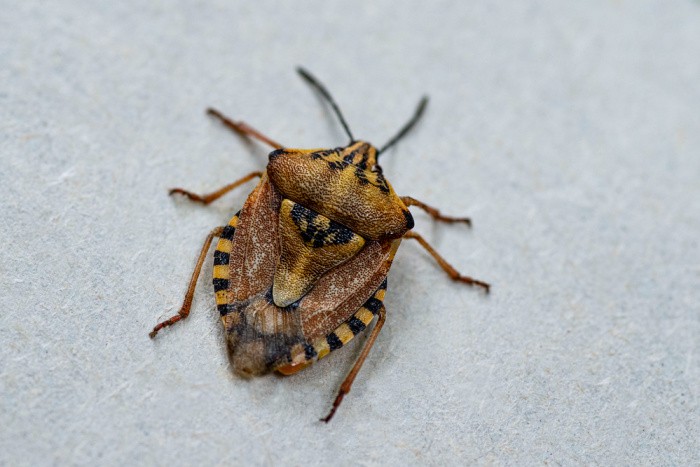




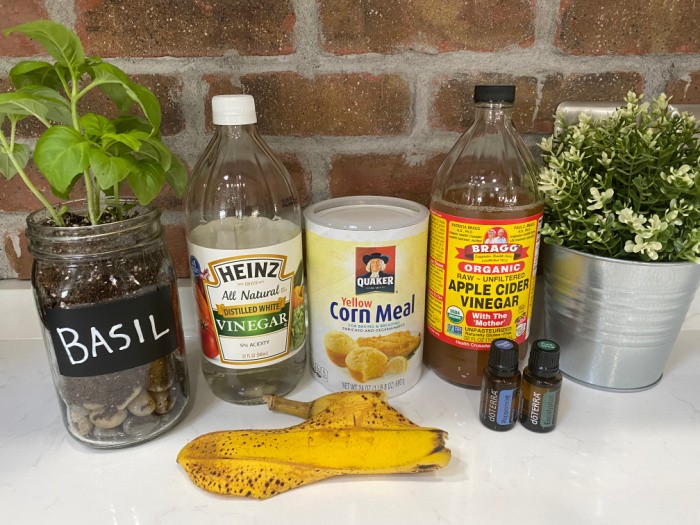















The stink bugs we have don’t bite, but they do dive after you to try to defend themselves!
Hi Chanda, oh just the thought of them jumping on me!! LOL! Thank you, Linda
In northern Arizona we have a different sort of “Stink Bug”:
https://www.desertusa.com/insects/stinkbug.html
I ‘ve lived in AZ much of my life from Tucson to far north of Phoenix and am not aware of ever having seen the types featured in this article. Maybe they’re here too?
-Eric in NAZ.
Hi Eric, oh my gosh, I think I have seen those here! Thanks for sharing that link!!!! Here in Utah, we see the ones in my article today. My daughter and her family live in Flagstaff. The desert, the critters, the bugs, yeah!! Thanks again, Linda
Not sure if you have had this experience or not, just wanted to share. I use peppermint essential oil to treat my plants for pests like gnats. Since I’ve been treating my indoor jungle, I’ve not noticed a stink bug at all!
Since I moved into this house 3 and half years ago, I’ve been plagued with them. This is exciting! Now the trick will be to see if they try to come in this fall. I’ll be doing the other measures to be sure!
But if anyone wants to try peppermint essential oil, water and a drop of blue dawn dish liquid, let me know if it works for you.
Thank you,
Lisa
Hi Lisa, oh the gnats, yeah, those are such a nuisance. I will try some peppermint oil next time. It will be in the fall because that’s when we get fresh peaches. Thank you, Linda
The Marmorated Stink Bugs are the bad ones. They eat plants that you want to keep or on veggie plants. The other ones are pest controllers and are good ones. The do not eat or suck the juices out of other plants. If you find the Marmorated ones, kill them!! You will be glad yo did!
Hi Cheryl, we have the bad ones! Oh, my gosh, I’m glad you told me! I don’t like them!! Linda
The Mamorated stink bug is a bad garden pest here in Missouri. They ruin peppers, tomatoes,etc. (I’ll definitely try the neem oil, thanks)
Never had a problem with them in house, though.
Hi Eileen, I haven’t had them in the house either. I only see them outside. It’s so frustrating when you plant a garden and you spot one of those critters!! Linda
Wow, didn’t know some of this, but I do know… they stink; almost as bad as skunks. Haven’t seen any lately but will keep in mind what I’ve read.
Hi Pamela, they are little stinkers that’s for sure! LOL! Linda
Thank you this information. I was shocked yesterday to see one of these crawling down my arm as I sat in a recliner in my living room!
What are the sticky bug traps you mention? Where do I get them?
Hi Brenda, oh my gosh, I would have jumped!!!! Here is some inexpensive ones I use: https://amzn.to/3eymaXs. Linda